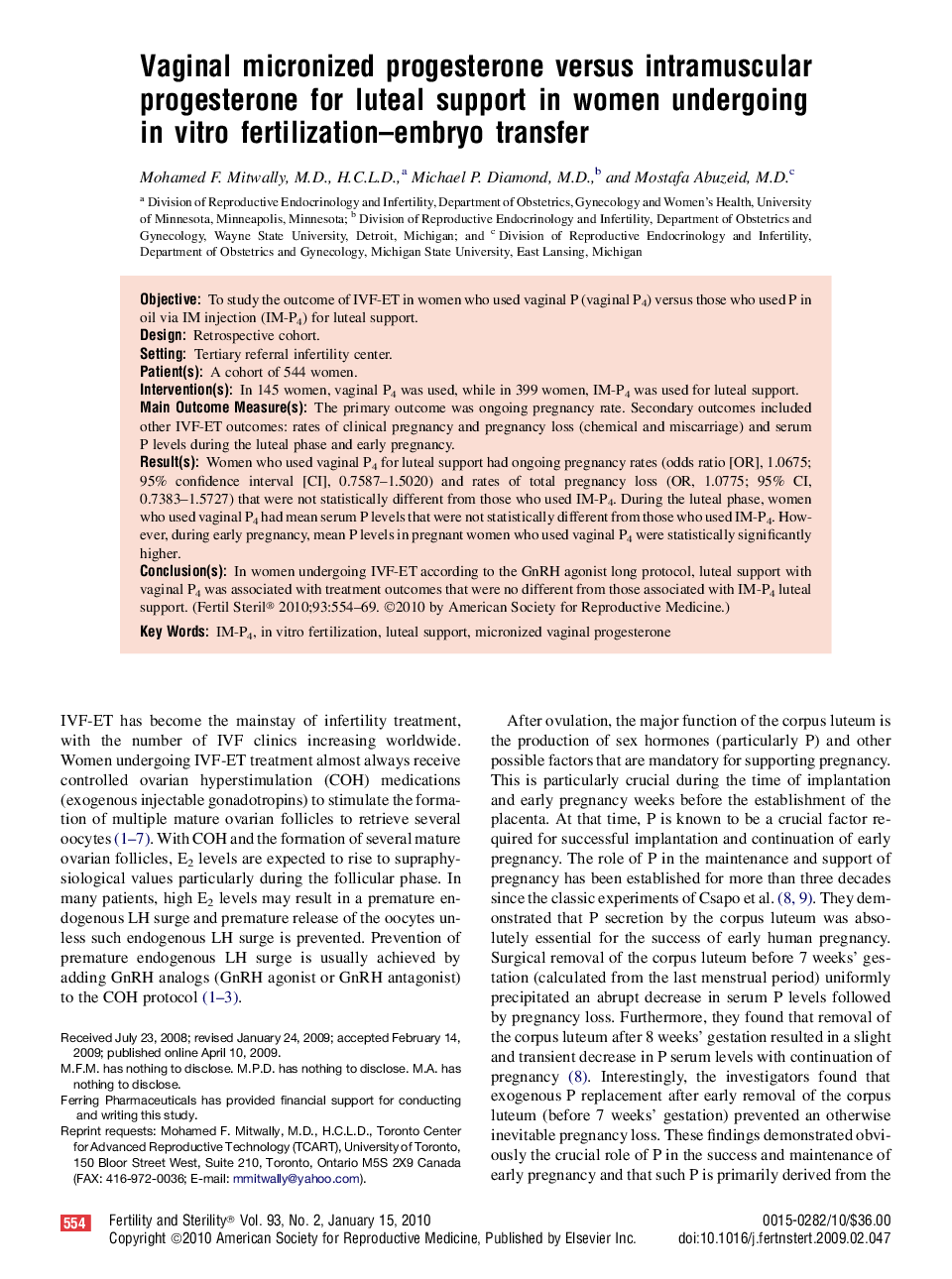| Article ID | Journal | Published Year | Pages | File Type |
|---|---|---|---|---|
| 3933671 | Fertility and Sterility | 2010 | 16 Pages |
ObjectiveTo study the outcome of IVF-ET in women who used vaginal P (vaginal P4) versus those who used P in oil via IM injection (IM-P4) for luteal support.DesignRetrospective cohort.SettingTertiary referral infertility center.Patient(s)A cohort of 544 women.Intervention(s)In 145 women, vaginal P4 was used, while in 399 women, IM-P4 was used for luteal support.Main Outcome Measure(s)The primary outcome was ongoing pregnancy rate. Secondary outcomes included other IVF-ET outcomes: rates of clinical pregnancy and pregnancy loss (chemical and miscarriage) and serum P levels during the luteal phase and early pregnancy.Result(s)Women who used vaginal P4 for luteal support had ongoing pregnancy rates (odds ratio [OR], 1.0675; 95% confidence interval [CI], 0.7587–1.5020) and rates of total pregnancy loss (OR, 1.0775; 95% CI, 0.7383–1.5727) that were not statistically different from those who used IM-P4. During the luteal phase, women who used vaginal P4 had mean serum P levels that were not statistically different from those who used IM-P4. However, during early pregnancy, mean P levels in pregnant women who used vaginal P4 were statistically significantly higher.Conclusion(s)In women undergoing IVF-ET according to the GnRH agonist long protocol, luteal support with vaginal P4 was associated with treatment outcomes that were no different from those associated with IM-P4 luteal support.
